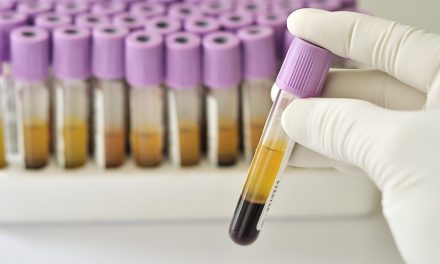Cutting back on carbohydrates can have major benefits for your health.
Many studies have shown that low-carb diets can help you lose weight and control diabetes or prediabetes.
Here are 15 easy ways to reduce your carb intake.
1. Eliminate Sugar-Sweetened Drinks
Sugar-sweetened beverages are very unhealthy.
They’re high in added sugar, which is linked to an increased risk of insulin resistance, type 2 diabetes and obesity when consumed in excess.
A 12-ounce (354-ml) can of sugary soda contains 38 grams of carbs, and a 12-ounce sweetened iced tea has 36 grams of carbs. These come entirely from sugar.
If you want to eat fewer carbs, avoiding sugar-sweetened beverages should be one of the first things you do.
If you want to drink something refreshing with a taste, try adding some lemon or lime to club soda or iced tea. If needed, use a small amount of low-calorie sweetener.
Bottom Line: Sugary drinks are high in carbs and added sugar. Avoiding them can significantly reduce your carbohydrate intake.
2. Cut Back on Bread
Bread is a staple food in many diets. Unfortunately, it’s also quite high in carbs and generally low in fiber.
This is especially true for white bread made from refined grains, which may negatively impact health and weight.
Even nutritious breads such as rye contain about 15 grams of carbs per slice. And only a couple of those are fiber, the only component of carbs that isn’t digested and absorbed .
Although whole grain bread contains vitamins and minerals, there are many other foods that provide the same nutrients with much fewer carbs.
These healthy foods include vegetables, nuts and seeds.
However, it can be tough to give up bread entirely. If you’re finding it difficult, try one of these delicious low-carb bread recipes that are easy to make.
Bottom Line: Whole grain bread contains some important nutrients, but these can be found in many other foods that are lower in carbs.
3. Stop Drinking Fruit Juice
Unlike whole fruit, fruit juice contains little to no fiber and is full of sugar.
Although it provides some vitamins and minerals, it’s no better than sugar-sweetened beverages in terms of sugar and carbs. This is true even for 100% fruit juice.
For instance, 12 oz (354 ml) of 100% apple juice contains 48 grams of carbs, most of which is sugar.
It’s best to avoid juice completely. Instead, try flavoring your water by adding a slice of orange or lemon.
Bottom Line: Fruit juice contains as many carbs as sugar-sweetened beverages. Instead of drinking juice, add a small amount of fruit to water.
4. Choose Low-Carb Snacks
Carbs can add up quickly in snack foods such as chips, pretzels and crackers.
These types of foods are also not very satisfying.
One study found women felt fuller and ate 100 fewer calories at dinner when they ate a high-protein snack, compared to a low-protein one.
Having a low-carb snack that contains protein is the best strategy when hunger strikes between meals.
Here are a few healthy snacks that contain less than 5 grams of digestible (net) carbs per 1-oz (28-gram) serving and also some protein:
- Almonds: 6 grams of carbs, 3 of which are fiber.
- Peanuts: 6 grams of carbs, 2 of which are fiber.
- Macadamia nuts: 4 grams of carbs, 2 of which are fiber.
- Hazelnuts: 5 grams of carbs, 3 of which are fiber.
- Pecans: 4 grams of carbs, 3 of which are fiber.
- Walnuts: 4 grams of carbs, 2 of which are fiber.
- Cheese: Less than 1 gram of carbs.
Bottom Line: Make sure to have healthy low-carb snacks such as nuts and cheese on hand in case you get hungry between meals.
5. Eat Eggs or Other Low-Carb Breakfast Foods
Even small amounts of some breakfast foods are often high in carbs.
For instance, one half-cup (55 grams) of granola cereal typically has around 30 grams of digestible carbs, even before adding milk.
Conversely, eggs are an ideal breakfast when you’re trying to cut back on carbs.
For starters, each egg contains less than 1 gram of carbs. They’re also a great source of high-quality protein, which can help you feel full for hours and eat fewer calories during the rest of the day.
What’s more, eggs are extremely versatile and can be prepared in many ways, including hard-boiling for an on-the-go breakfast.
For breakfast recipes featuring eggs and other low-carb foods, read this: 18 Low-Carb Breakfast Recipes.
Bottom Line: Choosing eggs or other high-protein, low-carb foods for breakfast can help you feel full and satisfied for several hours.
6. Use These Sweeteners Instead of Sugar
Using sugar to sweeten foods and beverages isn’t a healthy practice, particularly on a low-carb diet.
One tablespoon of white or brown sugar has 12 grams of carbs in the form of sucrose, which is 50% fructose and 50% glucose.
Although honey may seem healthier, it’s even higher in carbs. One tablespoon provides 17 grams of carbs, with roughly the same percentage of fructose and glucose as sugar.
Learning to enjoy the natural flavor of foods without adding any sweetener may ultimately be best.
However, here are a few safe sugar-free sweeteners that may even have some modest health benefits:
- Stevia: Stevia comes from the stevia plant, which originated in South America. In animal studies, it has been shown to help lower blood sugar levels and increase insulin sensitivity.
- Erythritol: Erythritol is a type of sugar alcohol that tastes like sugar, does not raise blood sugar or insulin levels and may help prevent cavities by killing plaque-causing bacteria.
- Xylitol: Another sugar alcohol, xylitol also helps fight the bacteria that cause tooth decay. In addition, animal research suggests it may reduce insulin resistance and protect against obesity.
Bottom Line: Using low-calorie sugar alternatives can help you keep your carb intake low without giving up sweetness altogether.
7. Ask for Veggies Instead of Potatoes or Bread at Restaurants
Eating out can be challenging during the initial stages of a low-carb diet.
Even if you order meat or fish with no breading or gravy, you’ll typically receive a starch on the side.
This is often potatoes, pasta, bread or rolls.
However, these starches can add 30 grams of carbs to your meal or more. It depends on the portion size, which is often quite large.
Instead, ask your server to substitute low-carb vegetables in place of the high-carb foods. If your meal already includes a side of vegetables, you can have another serving, as long as the vegetables are the non-starchy type.
Bottom Line: Getting vegetables instead of potatoes, pasta or bread when eating out can save many carbs.
8. Substitute Low-Carb Flours for Wheat Flour
Wheat flour is a high-carb ingredient in most baked goods, including breads, muffins and cookies. It’s also used for coating meat and fish prior to sauteing or baking.
Even whole wheat flour, which contains more fiber than refined white flour, has 61 grams of digestible carbs per 100 grams (3.5 ounces).
Fortunately, flours made from nuts and coconuts are a great alternative and widely available at grocery stores and from online retailers.
100 grams of almond flour contains less than 11 grams of digestible carbs, and 100 grams of coconut flour contains 21 grams of digestible carbs.
These flours can be used to coat foods for sauteing, as well as in recipes that call for wheat flour. However, because they do not contain gluten, the texture of the finished product often won’t be the same.
Almond and coconut flour tend to work best in recipes for muffins, pancakes and similar soft, baked goods.
Bottom Line: Use almond or coconut flour in place of wheat flour in baked goods or when coating food prior to sauteing or baking.
9. Replace Milk with Almond or Coconut Milk
Milk is nutritious, but it’s also fairly high in carbs because it contains a type of sugar called lactose.
An 8-ounce (240 ml) glass of full-fat or low-fat milk contains 12–13 grams of carbs.
Adding a splash of milk to your coffee or tea is fine.
But if you drink milk by the glassful or in lattes or shakes, it may end up contributing a lot of carbs.
There are several milk substitutes available. The most popular are coconut and almond milk, but there are also types made from other nuts and hemp. Vitamin D, calcium and other vitamins and minerals are often added to improve nutritional value.
These beverages are mainly water, and the carb content is usually very low. Most have 2 grams of digestible carbs or less per serving.
However, some contain sugar, so be sure to check the ingredient list and nutrition label to make sure you’re getting an unsweetened, low-carb beverage.
Bottom Line: Use almond milk, coconut milk or other alternative low-carb milk substitutes in place of regular milk.
10. Emphasize Non-Starchy Veggies
Vegetables are a valuable source of nutrients and fiber on a low-carb diet. They also contain phytochemicals (plant compounds), many of which function as antioxidants that help protect you from disease.
However, it’s important to select non-starchy types to keep your carb intake down.
Certain root vegetables and legumes, such as carrots, beets, sweet potatoes, peas, lima beans and corn, are moderately high in carbs.
Fortunately, there are many delicious, nourishing low-carb veggies you can eat.
To find out more about them, read this: The 21 Best Low-Carb Vegetables.
Bottom Line: Choose non-starchy vegetables to keep your carb intake low while maintaining a high intake of nutrients and fiber.
11. Choose Dairy That is Low in Carbs
Dairy products are delicious and can be very healthy.
For starters, they contain calcium, magnesium and other important minerals.
Dairy also contains conjugated linoleic acid (CLA), a type of fatty acid which has been shown to promote fat loss in several studies.
However, some dairy foods are bad choices on a low-carb diet. For instance, fruit-flavored yogurt, frozen yogurt and pudding are often loaded with sugar and very high in carbs.
On the other hand, Greek yogurt and cheese are much lower in carbs and have been shown to reduce appetite, promote fullness, improve body composition and reduce heart disease risk factors.
Here are a few good dairy choices, along with carb counts per 100 grams (3.5 oz):
- Plain Greek yogurt: 4 grams of carbs.
- Cheese (brie, mozzarella, cheddar, etc.): 1 gram of carbs.
- Ricotta cheese: 3 grams of carbs.
- Cottage cheese: 3 grams of carbs.
Bottom Line: Choose Greek yogurt and cheese in order to obtain the benefits of dairy with very few carbs.
12. Eat Healthy High-Protein Foods
Eating a good protein source at every meal can make it easier to cut back on carbs, and it’s particularly important if you’re trying to lose weight.
Protein triggers the release of the “fullness hormone” PYY, reduces hunger, helps fight food cravings and protects muscle mass during weight loss.
Protein also has a much higher thermic value compared to fat or carbs, meaning your body’s metabolic rate increases more when digesting and metabolizing it.
Make sure to include at least one serving from this list of high-protein, low-carb foods at each meal:
- Meat.
- Poultry.
- Fish.
- Eggs.
- Nuts.
- Cheese.
- Cottage Cheese.
- Greek Yogurt.
- Whey protein powder.
Bottom Line: Consuming healthy protein at every meal can help you feel full, fight cravings and boost your metabolic rate.
13. Prepare Foods with Healthy Fats
Fat replaces some carbs and typically makes up over 50% of calories on a low-carb diet.
Therefore, it’s important to choose fats that not only add flavor but also benefit your health.
Two of the healthiest choices are virgin coconut oil and extra-virgin olive oil.
Virgin coconut oil is a highly saturated fat that’s very stable at high cooking temperatures. Most of its fat is medium-chain triglycerides (MCTs), which may reduce belly fat and increase HDL cholesterol.
What’s more, these MCTs may also decrease appetite. In one study, men who ate an MCT-rich breakfast ate significantly fewer calories at lunch than men who ate a breakfast high in long-chain triglycerides.
Extra-virgin olive oil has been shown to reduce blood pressure, improve the function of the cells lining your arteries and help prevent weight gain.
Bottom Line: Preparing low-carb foods with healthy fats can enhance flavor, promote feelings of fullness and improve your health.
14. Start Reading Food Labels
Looking at food labels can provide valuable information about the carb content of packaged foods.
The key is knowing where to look and whether any calculations need to be done.
If you live outside the US, the fiber in the carbs section will have already been deducted.
If you live in the US, you can deduct the grams of fiber from the carbs to get the digestible (“net”) carb content.
It’s also important to look at how many servings are included in the package, as it’s often more than one.
If a trail mix contains 7 grams of carbs per serving and a total of 4 servings, you’ll end up taking in 28 grams of carbs if you eat the whole bag.
You can find out more about reading food labels here: How to Read Food Labels Without Being Tricked.
Bottom Line: Reading food labels can help you determine how many carbs are in packaged foods.
15. Count Carbs With a Nutrition Tracker
A nutrition tracker is a wonderful tool for keeping track of your daily food intake. Most are available as apps for smartphones and tablets, as well as online.
When you enter your food intake for each meal and snack, carbs and other nutrients are automatically calculated.
Some of the most popular nutrition tracking programs are MyFitnessPal, SparkPeople, FitDay and Cron-o-Meter.
These programs calculate your nutrient needs based on your weight, age and other factors, but you can customize your daily carb goal and change it when you like.
Most of the information in the food databases is trustworthy. However, keep in mind that some of these programs allow people to add custom nutrition information that may not always be accurate.
Bottom Line: Using a nutrition tracking app or online program can help you monitor and fine-tune your carb intake.
Take Home Message
Transitioning to a healthy low-carb lifestyle can be relatively easy if you have the right information and tools.
If you’re wondering how to structure a low-carb diet, then here is a detailed low-carb meal plan for beginners.
*Article originally appeared on Authority Nutrition.












